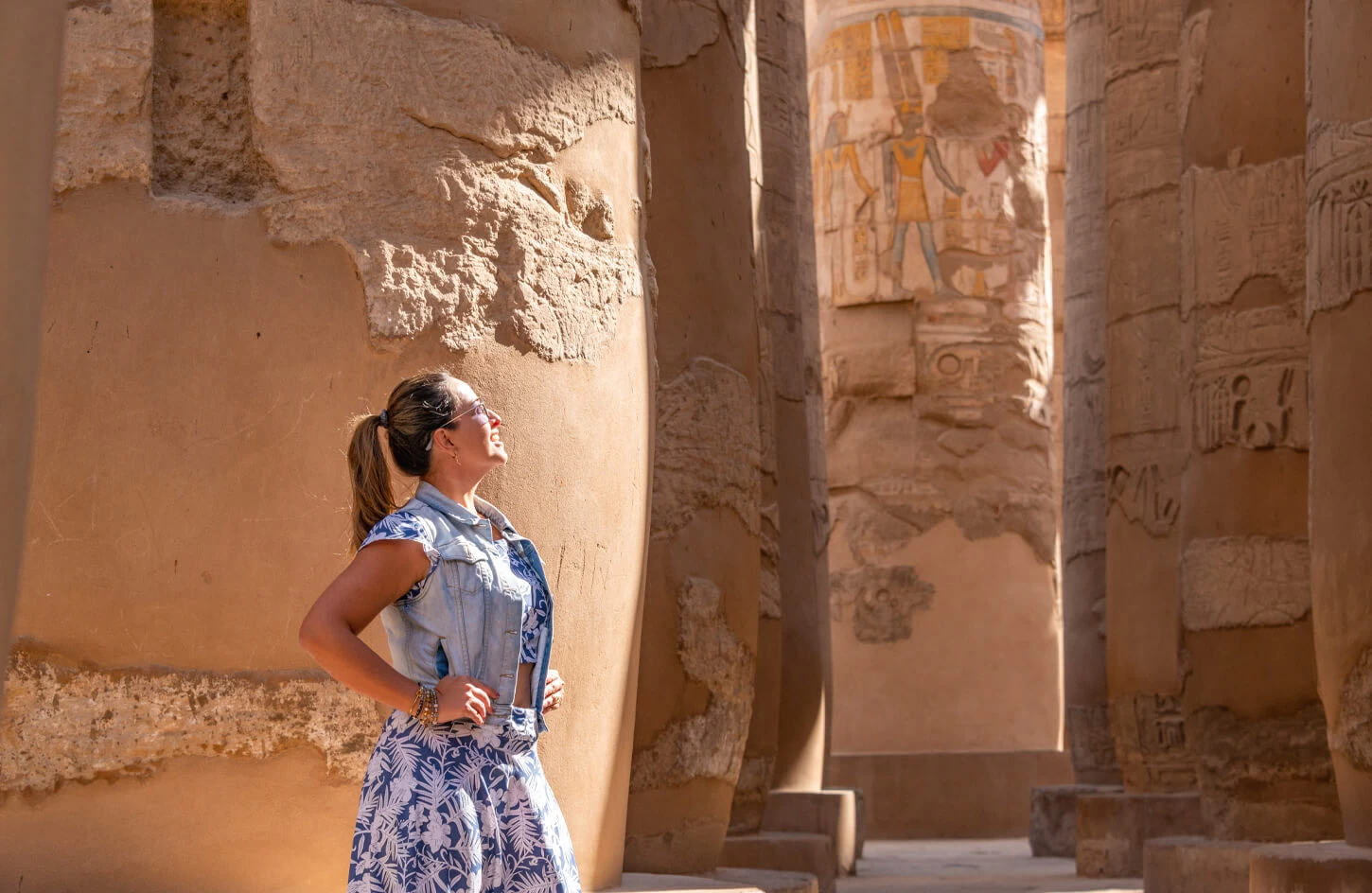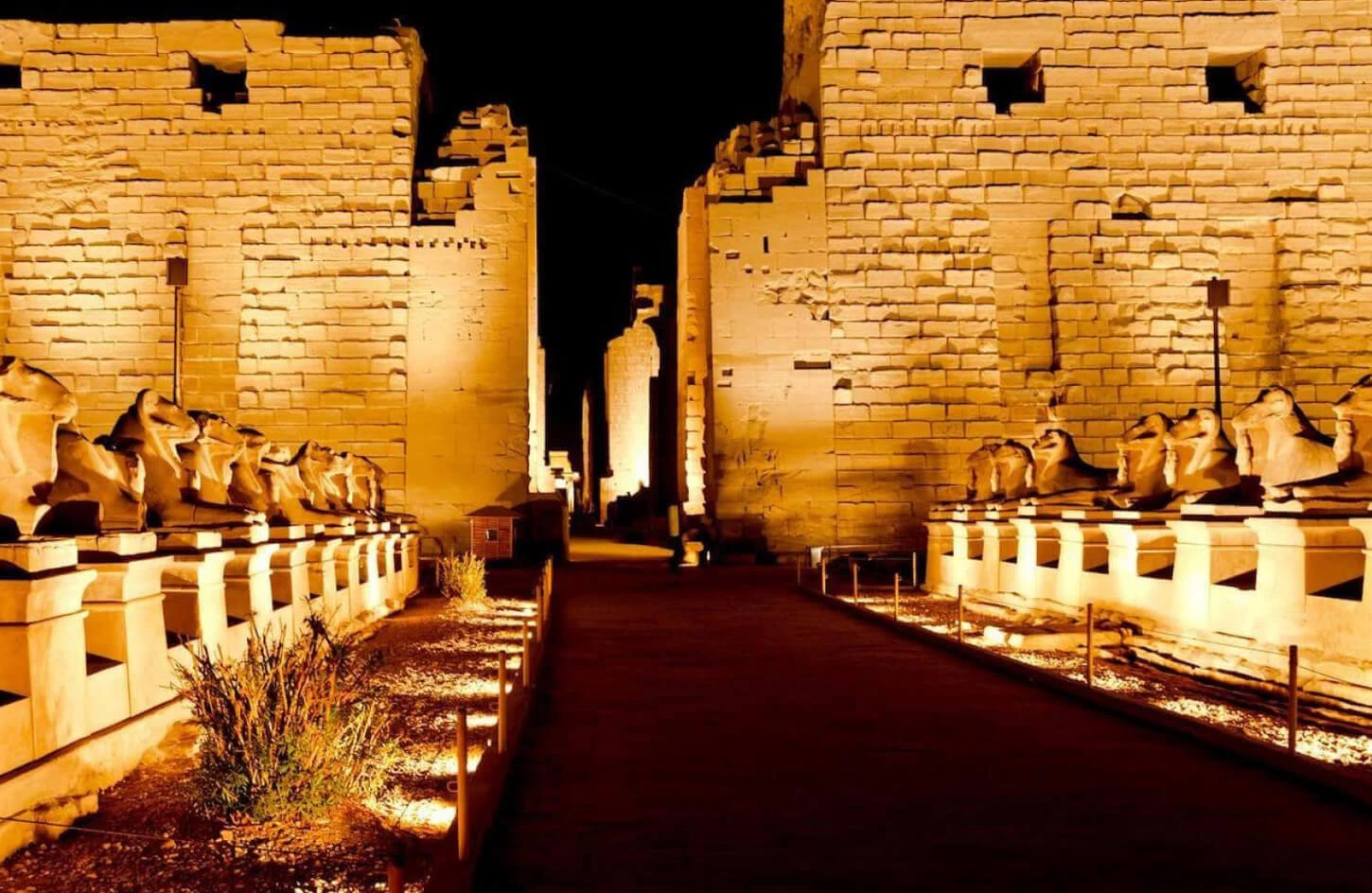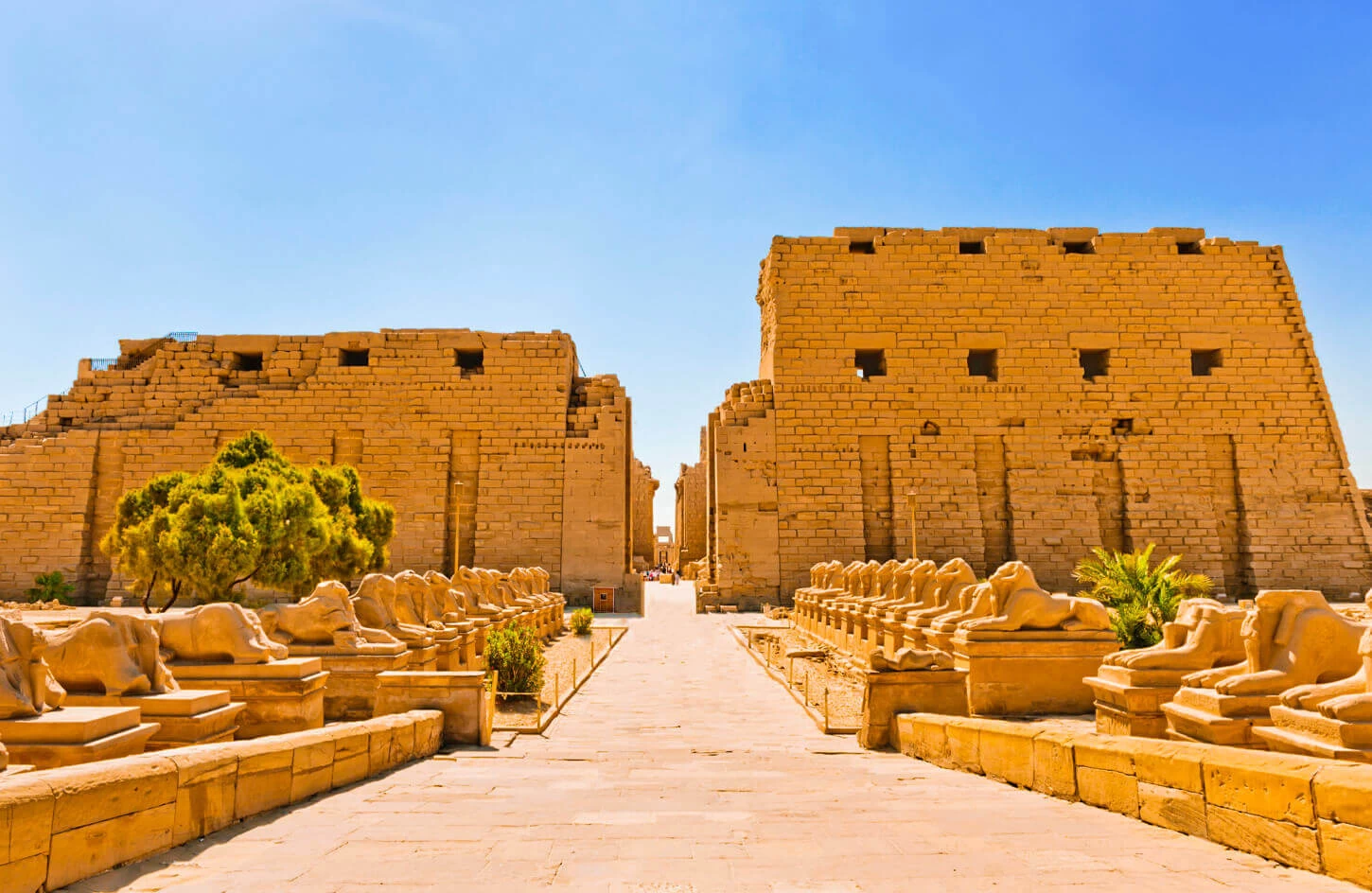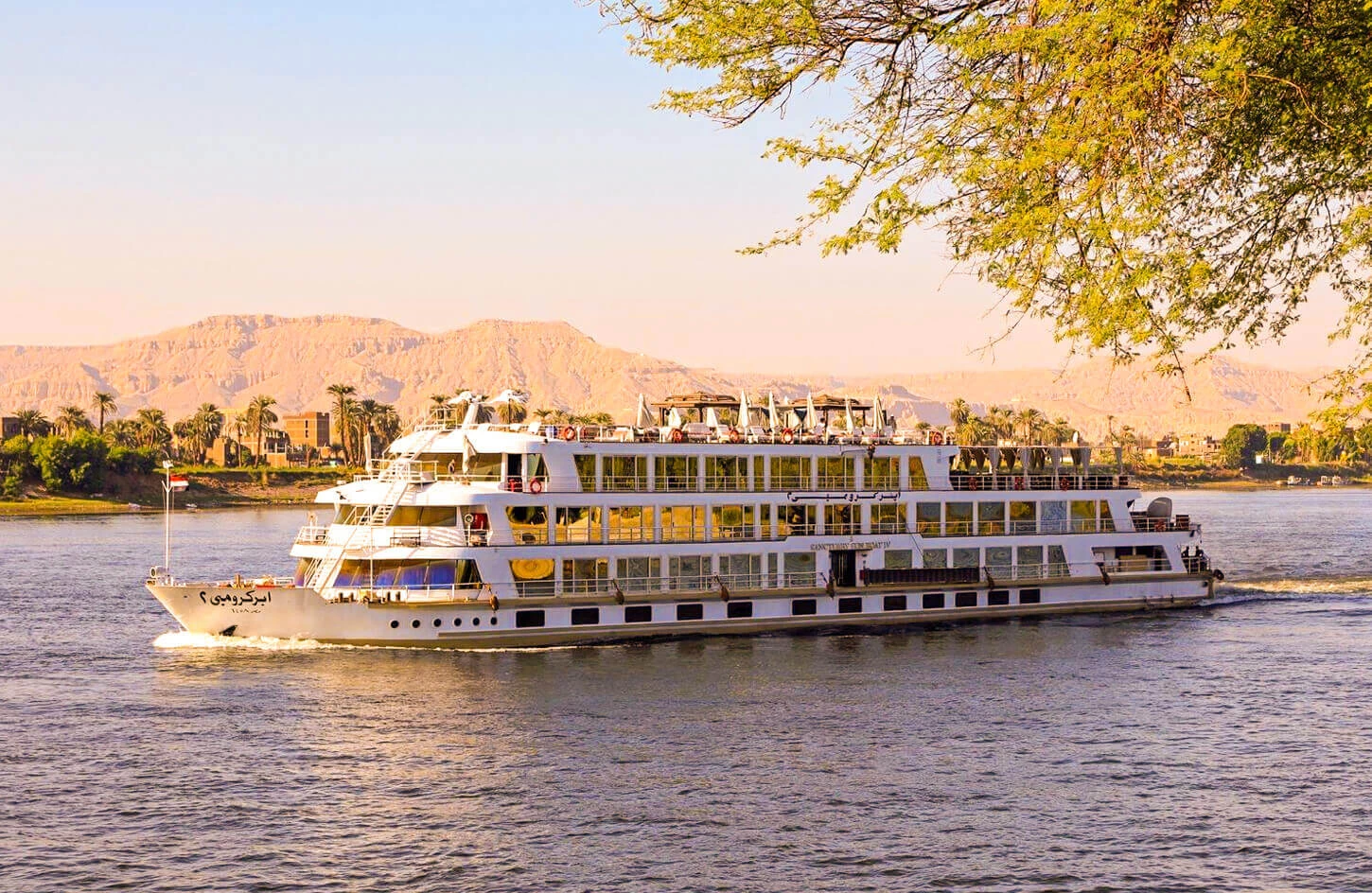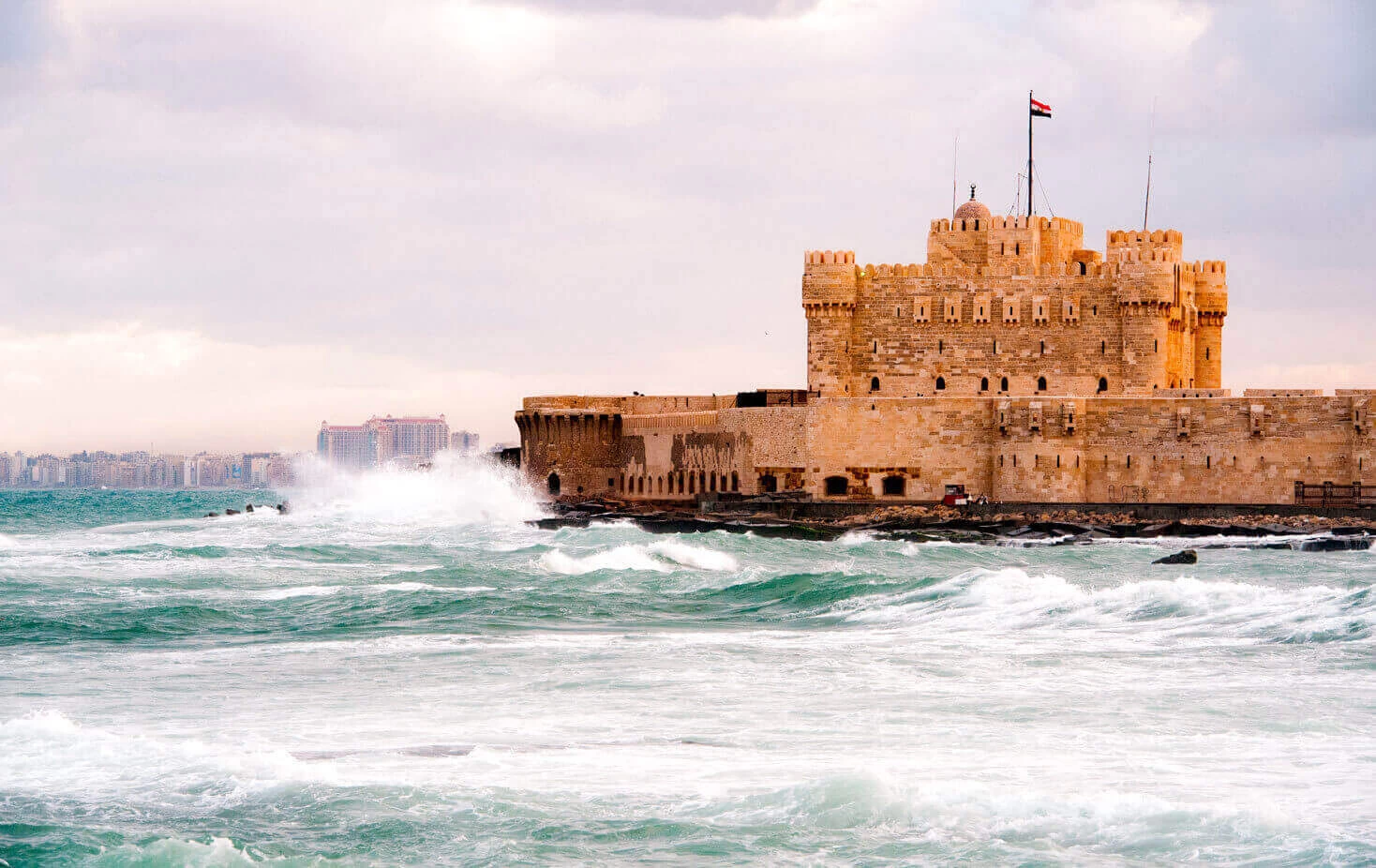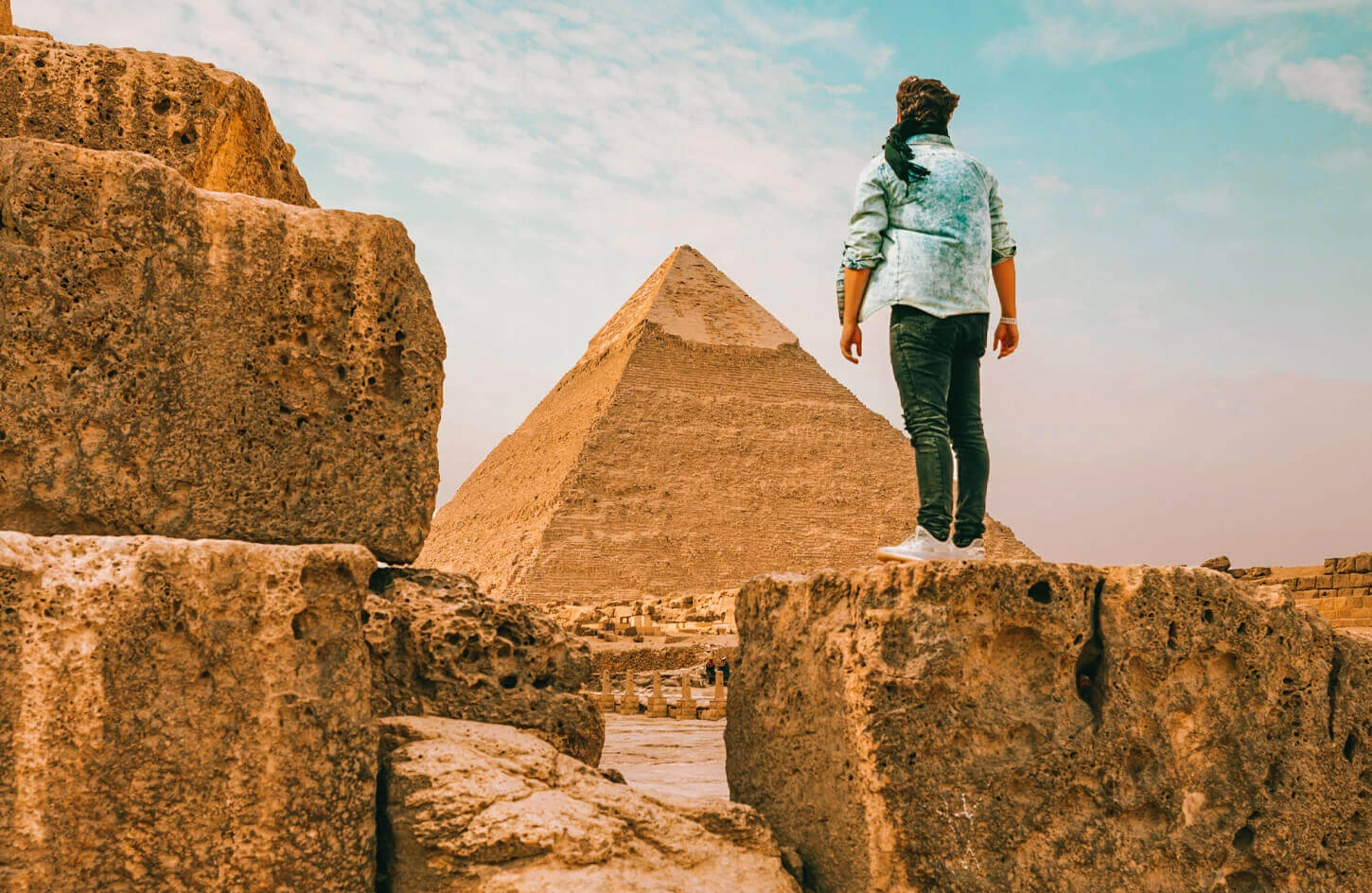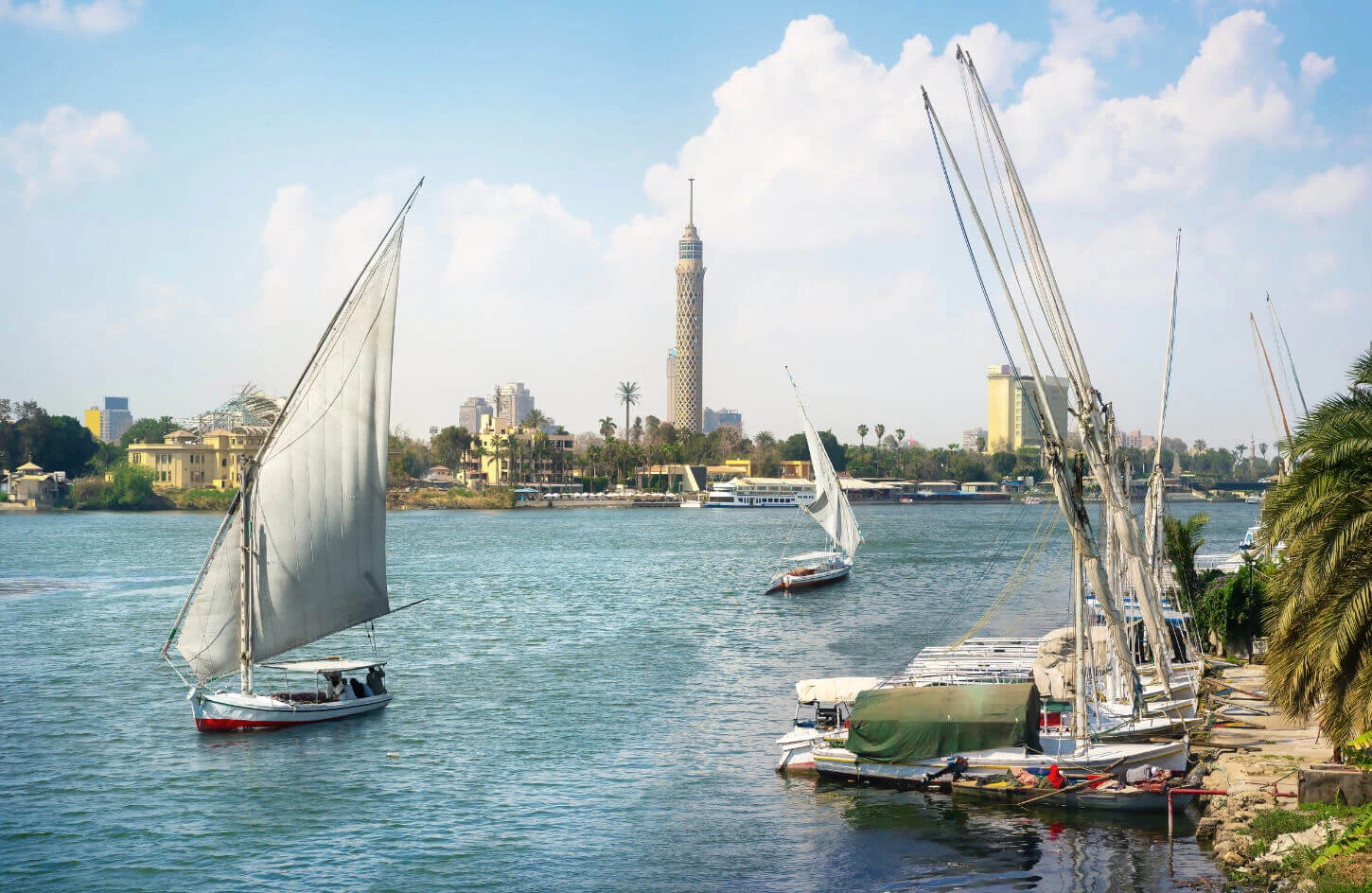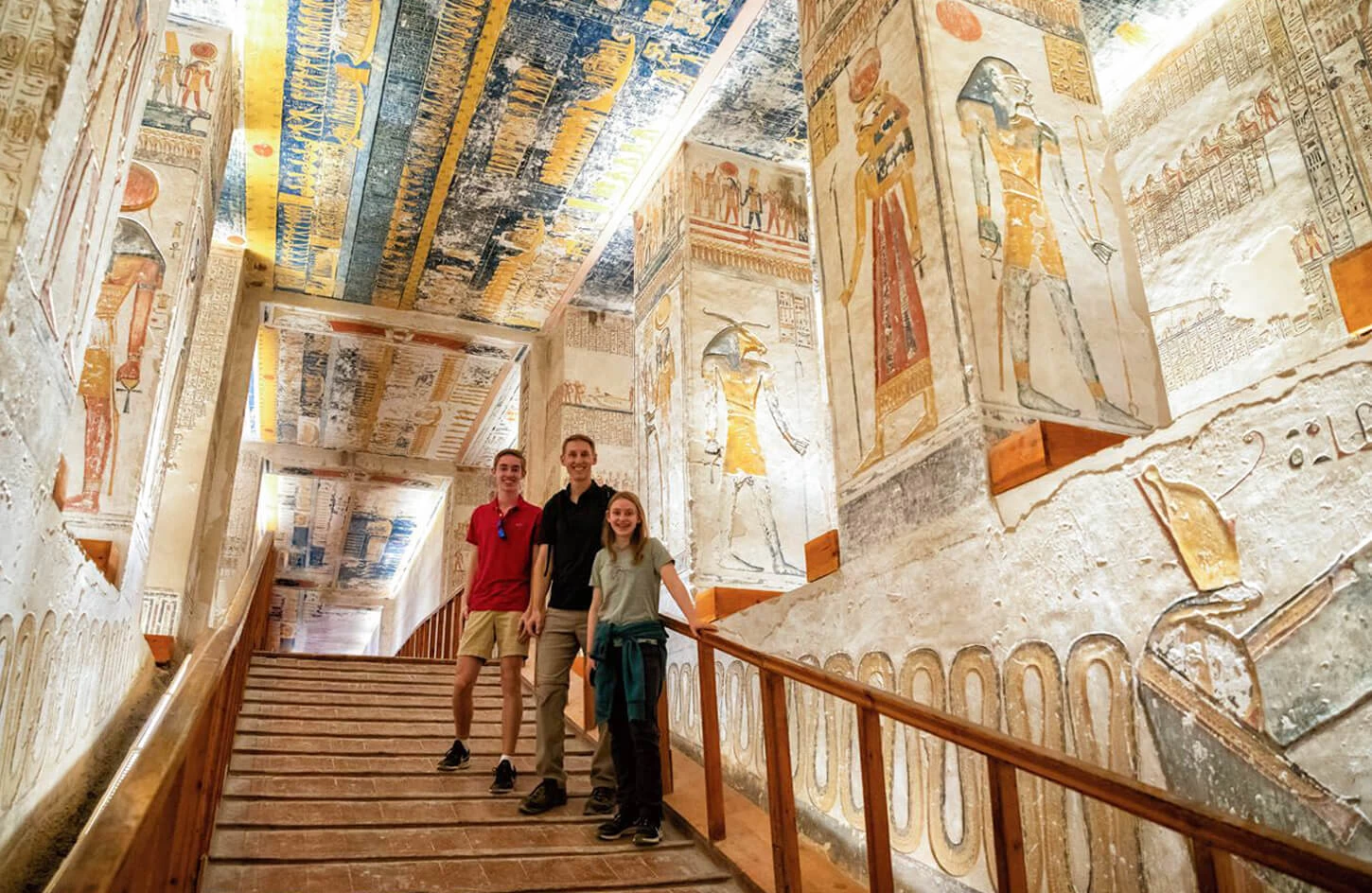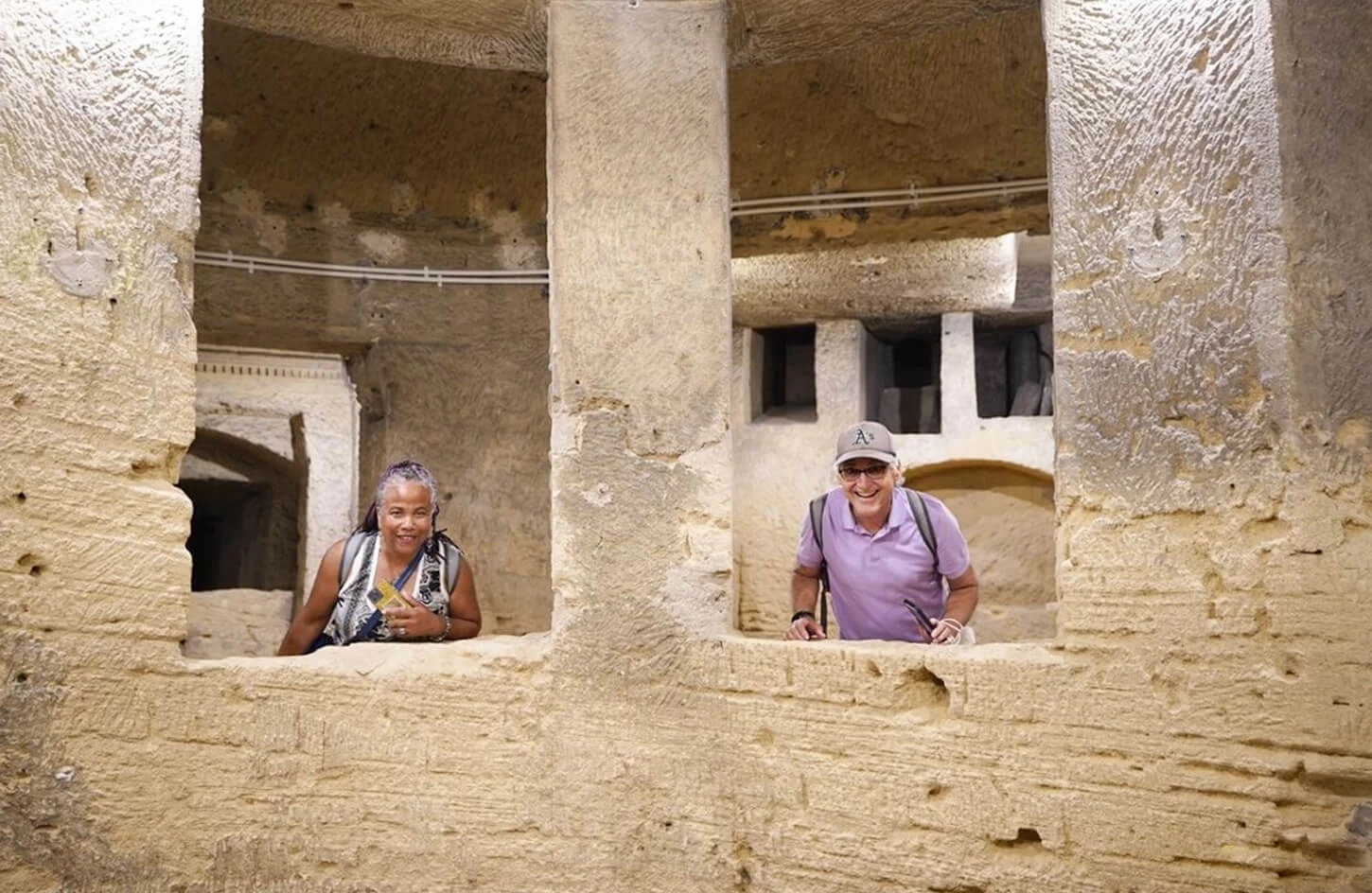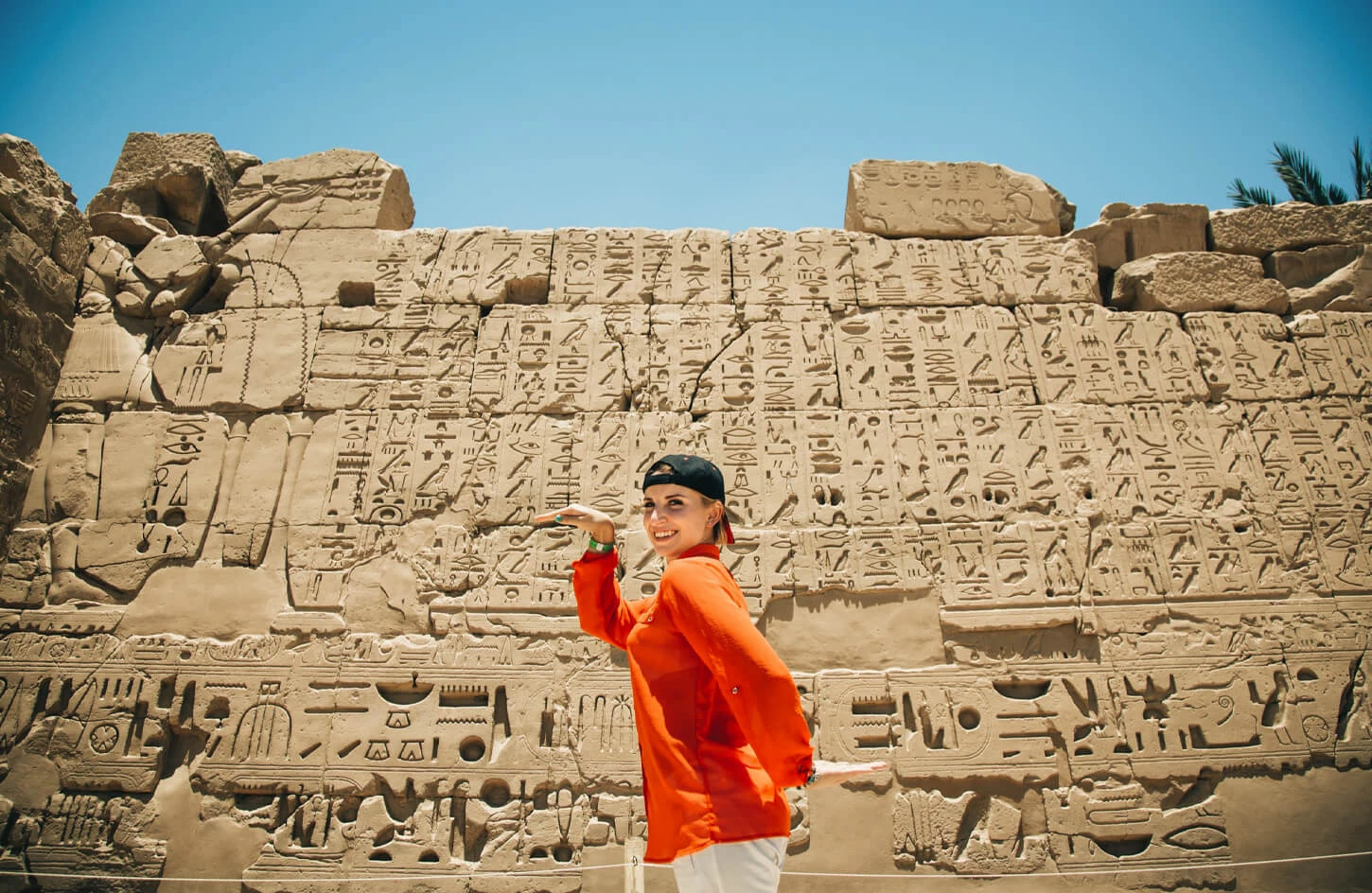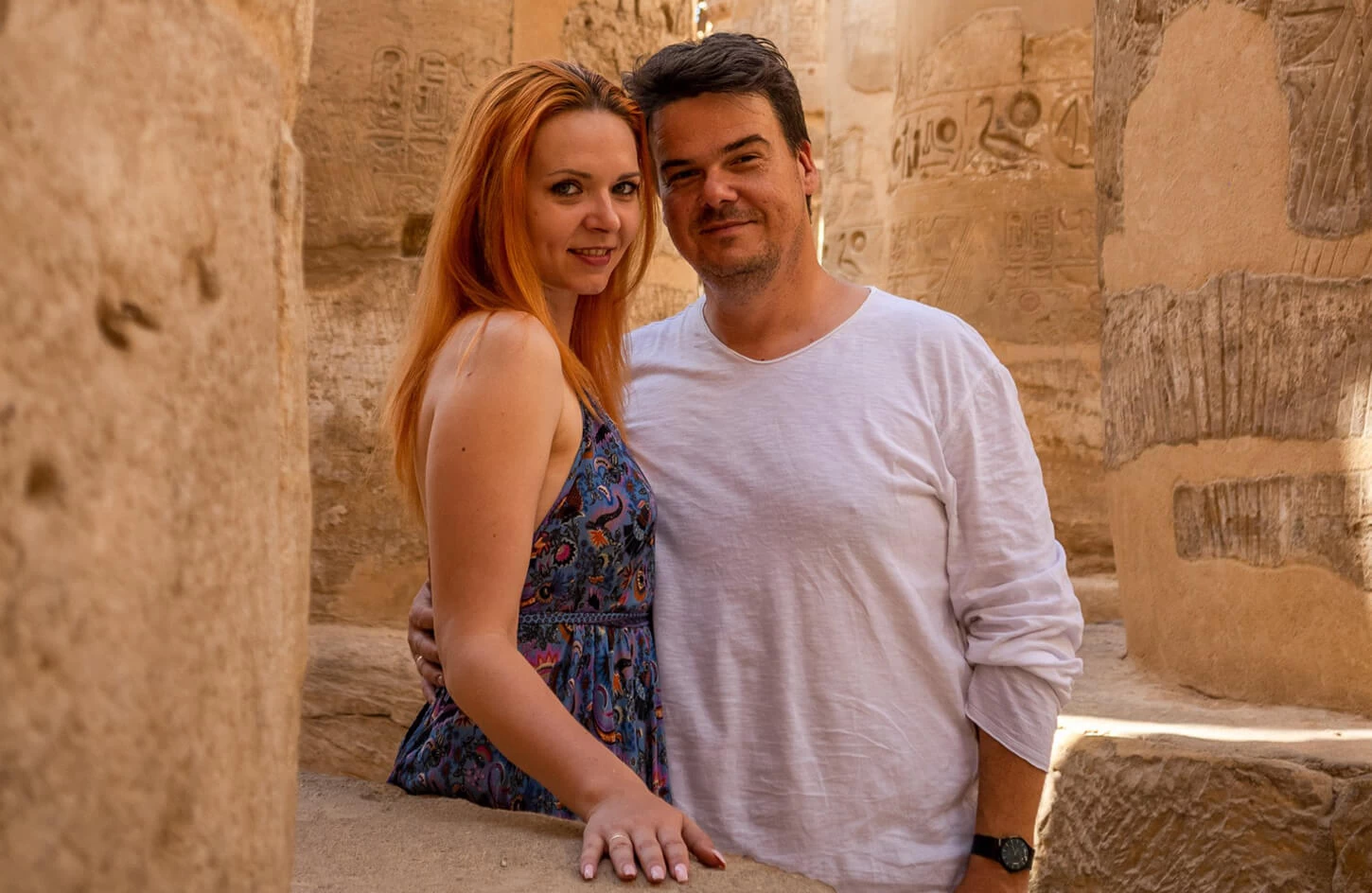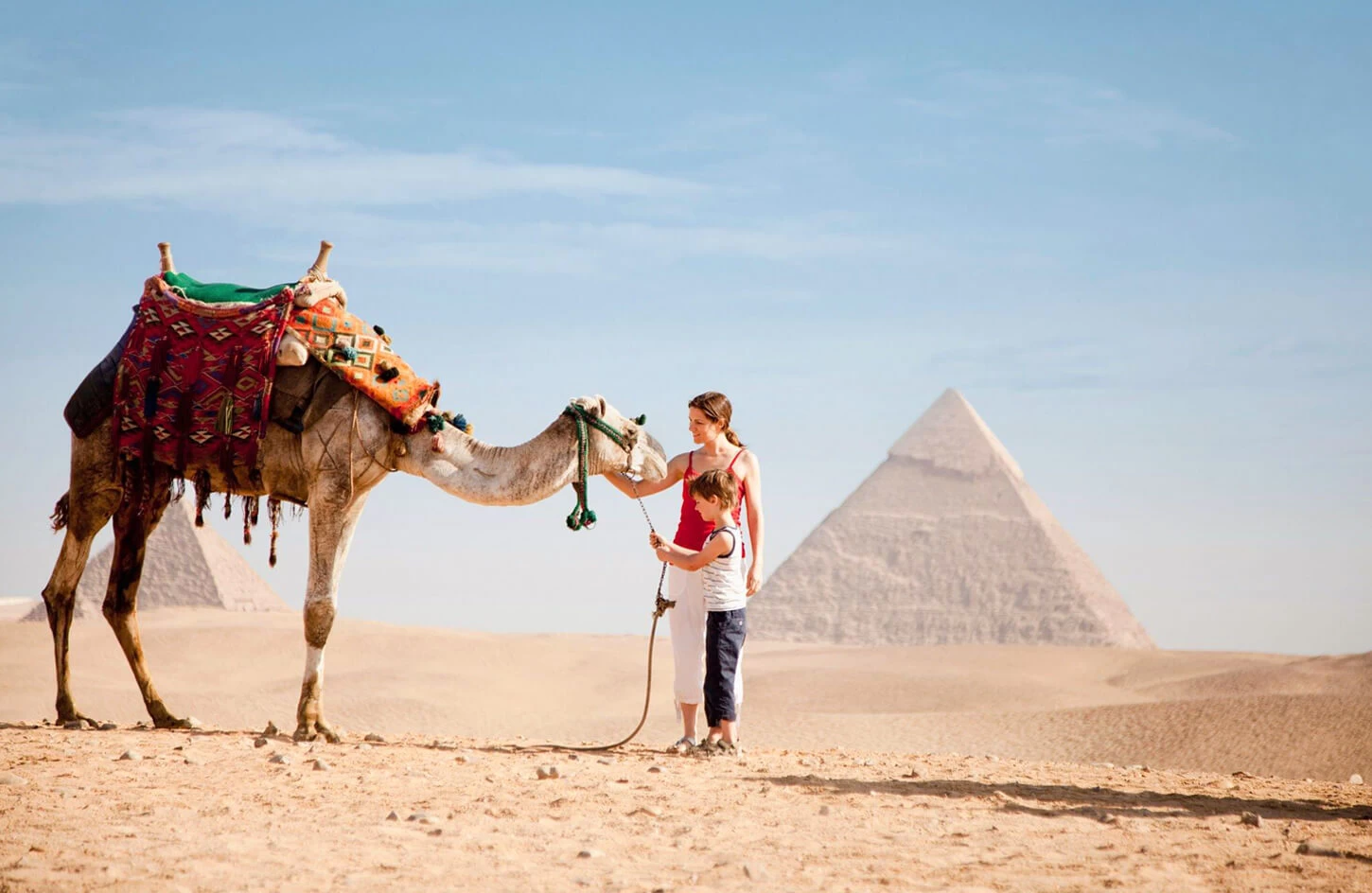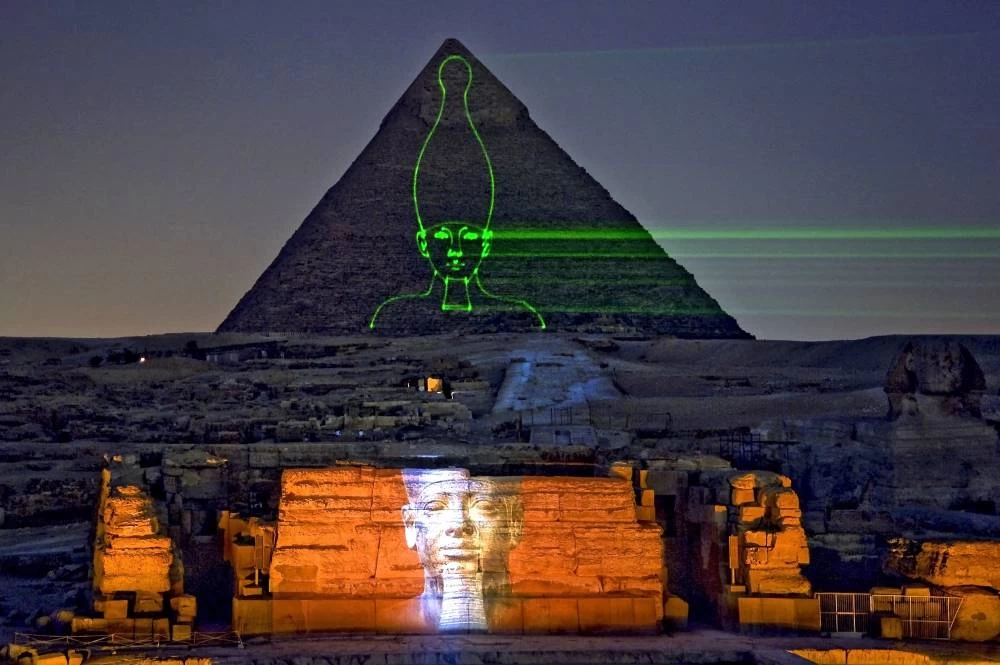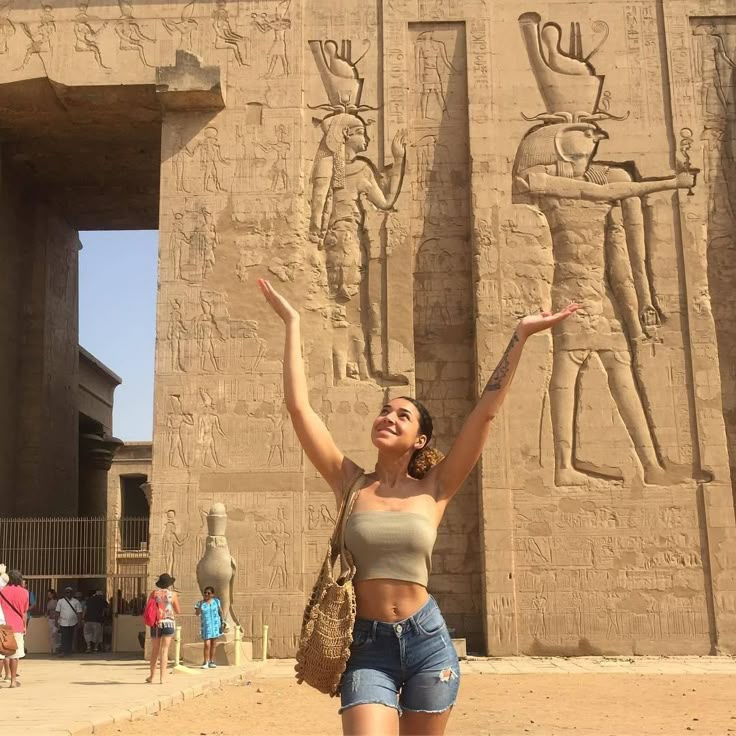Karnak Temple: The Largest Religious Complex in Ancient Egypt
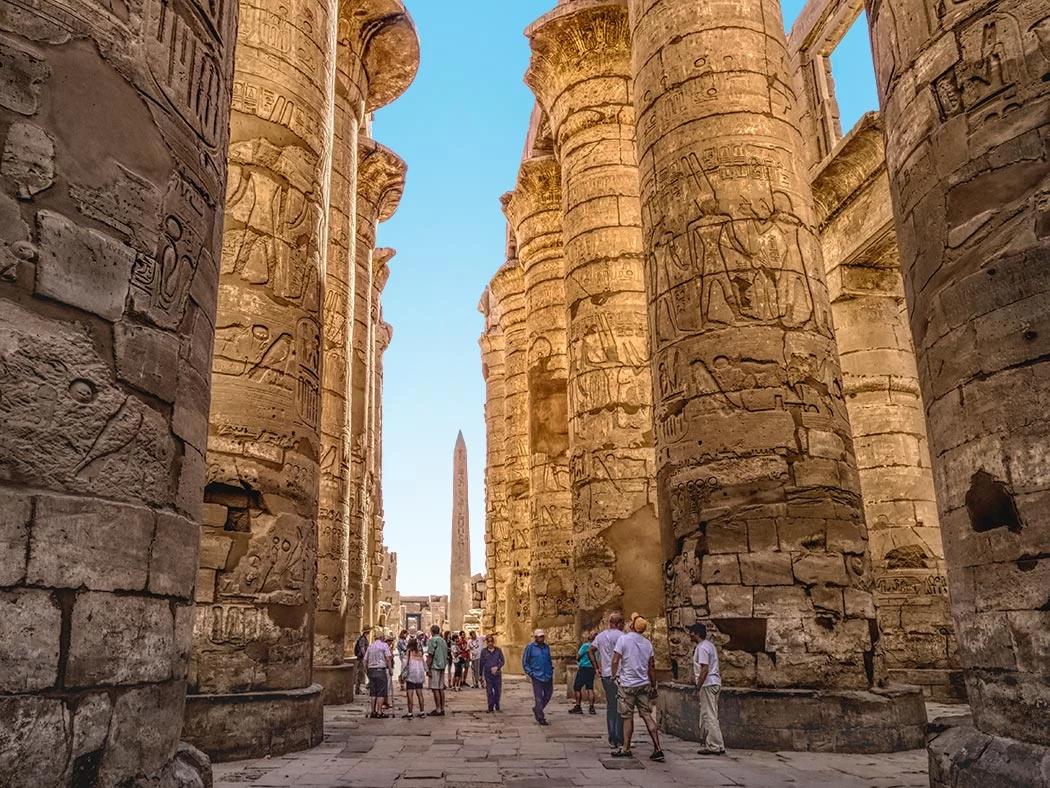
Karnak Temple, one of the most significant Luxor attractions, is a vast religious complex reflecting Egypt’s glorious past. Spanning the east bank of the Nile, Luxor's Karnak Temple is the largest temple in Egypt and is among the most important Luxor attractions. The making of this incredible site took over 2,000 years and remains an important must-see in Luxor for history enthusiasts and travelers alike.
This article will look into the exceptional history of Karnak Temple, its architectural wonders, secret haunting escapes, attractive Karnak Sound and Light Show, and its relation with Luxor Temple.
History of Karnak Temple
The history of Karnak Temple reaches back to the days of the Middle Kingdom (around 2000 BC); yet, most of the remaining buildings were raised during the New Kingdom (1550-1070 BC). The temple was dedicated primarily to Amun-Ra, the chief god of Thebes, and expanded upon by many consecutive pharaohs such as Hatshepsut, Thutmose III, Seti I, and Ramses II.
Furthermore, Karnak Temple was not just a mere temple but actually a center for political and economic activities. Its priesthood became all-powerful, and the great wealth channeled into it made it an important temple among other temples in Ancient Egypt. Today its ruins stand as a magnificent testament to the architectural and spiritual greatness of the pharaohs.
Secrets of Karnak Temple
Karnak Temple is a profusion of secrets that continue to tantalize scientists and tourists alike. Some of the best-known secrets of Karnak Temple include:
The Sacred Lake: Genuflection by priests, the lake has become one of the most enigmatic features of the temple.
The Precinct of Mut and Montu: These lesser-known sections of Karnak Temple were dedicated to the goddess Mut and the god of the falcon, Montu.
The Karnak Kings List: One inscription found in the temple lists the names of a number of ancient Egyptian rulers, creating a tangible density of history.
Unfinished Obelisks and Columns: These give insight into construction methods employed by the ancient Egyptians as well as the grandiose ambitions of the pharaohs.
Exploring these shadowy recesses of Karnak Temple reflects its dense historic and religious significance.
A Walk Through Karnak Temple
With the last threshold cleared, a passage through the gates from the Avenues of Sphinxes to the great gateway has no less architecturally impressive wonders:
The Avenue of Sphinxes: it was once connected to Luxor Temple, while the ram-headed sphinx statues forming its line served as protection.
The First Pylon: A massive gateway built by Pharaoh Nectanebo I, leading into the temple. Towering to 23 meters: the Karnak Hypostyle Hall.
Obelisks of Hatshepsut and Thutmose I: These constructions are veneration to the gods and a fulfillment of declarations to the power of kings.
The Sanctuary of Amun-Ra: the very intent of the temple in which the offerings and rituals held for the foremost deity were manifested.
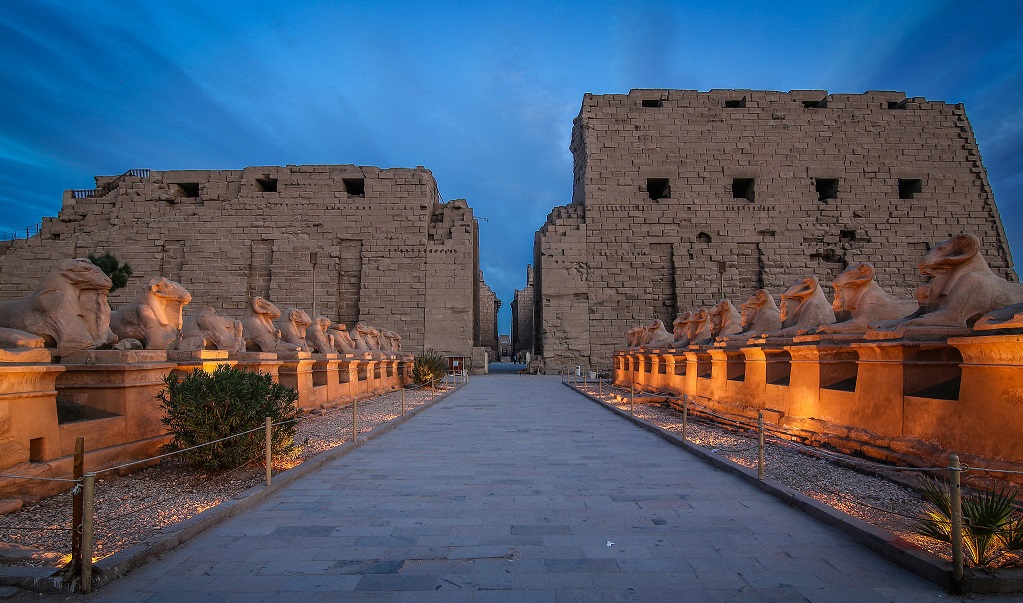
Karnak Sound and Light Show
If you want that extra bit of magic, go at night to the Karnak Temple, where you can see the world-famous Karnak Sound and Light Show. This experience presents the history of Karnak amid some dramatic lighting effects and narration. There is a wonderful interplay of light and shadow on the temple's massive columns and statues, taking the audience back to the time of the pharaohs.
The Karnak Sound and Light Show is among the top-rated things to do in Luxor, offering a mesmerizing journey through history with stunning visual effects. Anyone interested in the myths and legends of ancient Egypt must visit this place.
Karnak Temple vs. Luxor Temple: Which Should You Visit?
The tourists, in general, are in a dilemma: should one visit Karnak Temple or Luxor Temple? Barely two top-mentioned places in Luxor but completely different in experience:
Karnak Temple: The largest temple in Egypt, full of monumental Hypostyle Hall, sacred lakes, and numerous chapels, which were the center of religious life in ancient Thebes.
Luxor Temple: Smaller, yet equally enchanting, this temple primarily served as a royal temple, where the Opet Festival played a key role admired at night with wonderful illumination.
The two sites should be visited, for they are linked by the Avenue of Sphinxes, and each gives a special glimpse into ancient Egyptian civilization.
Why Karnak Temple Is One of the Most Impressive Sites in Luxor
Among the top things to do in Luxor, exploring Karnak Temple is an unforgettable experience. Its tremendous size, multitudes of carvings, and great historical standing make it an absolute must for every traveler to Luxor. Whether one tours it during the day or experiences the magnificent Karnak Sound and Light show at night, the temple is bound to remain in his mind for ages.
If you are planning Luxor day tours, visiting Karnak Temple should be at the top of your itinerary. From the massive Hypostyle Hall to the intriguing sacred lake, Karnak is an ageless beauty of ancient Egyptian architecture.
Are you ready to walk in the footsteps of pharaohs? Reserve your Luxor tour now and experience the mesmerizing Karnak Temple Luxor!
